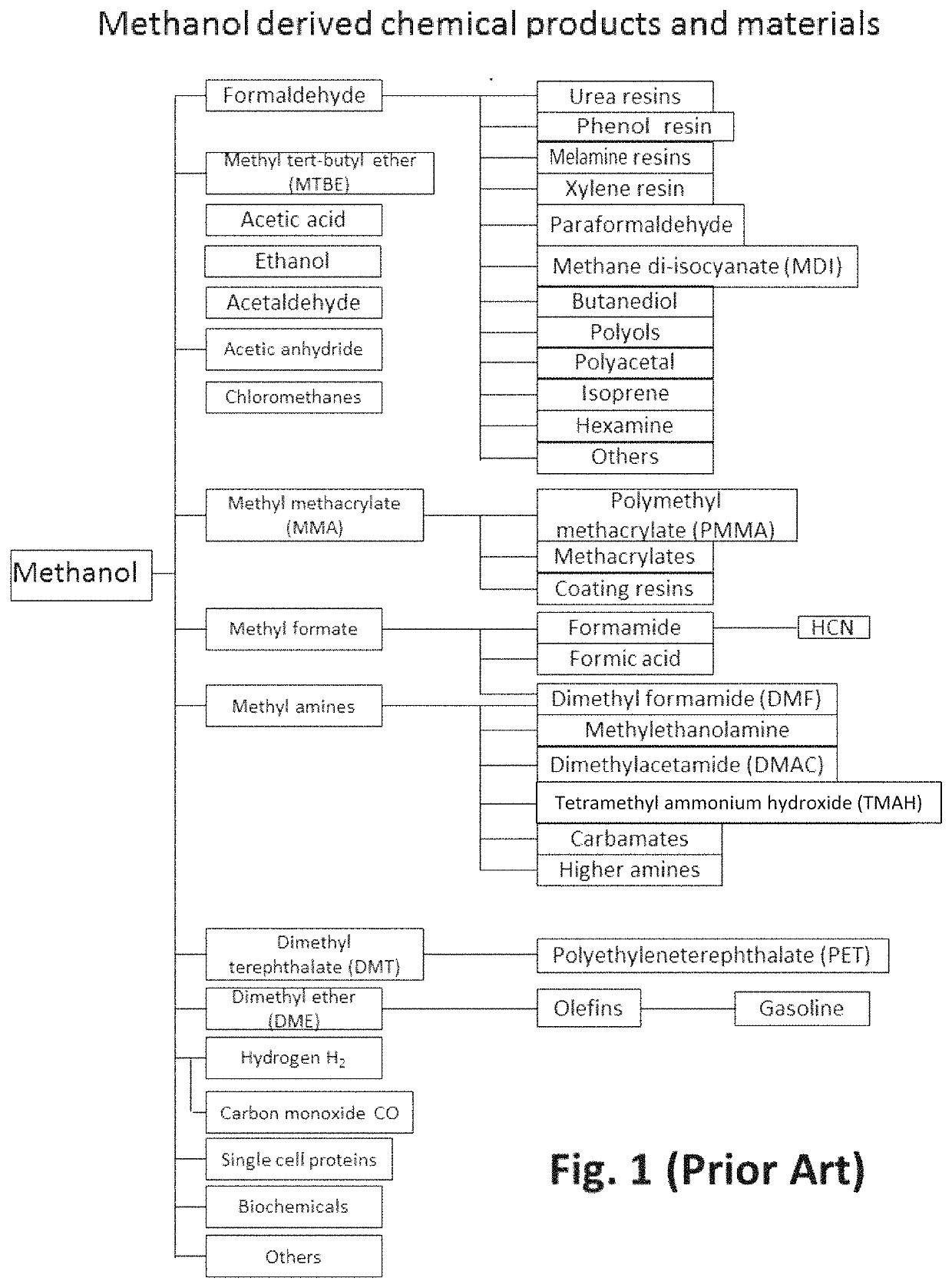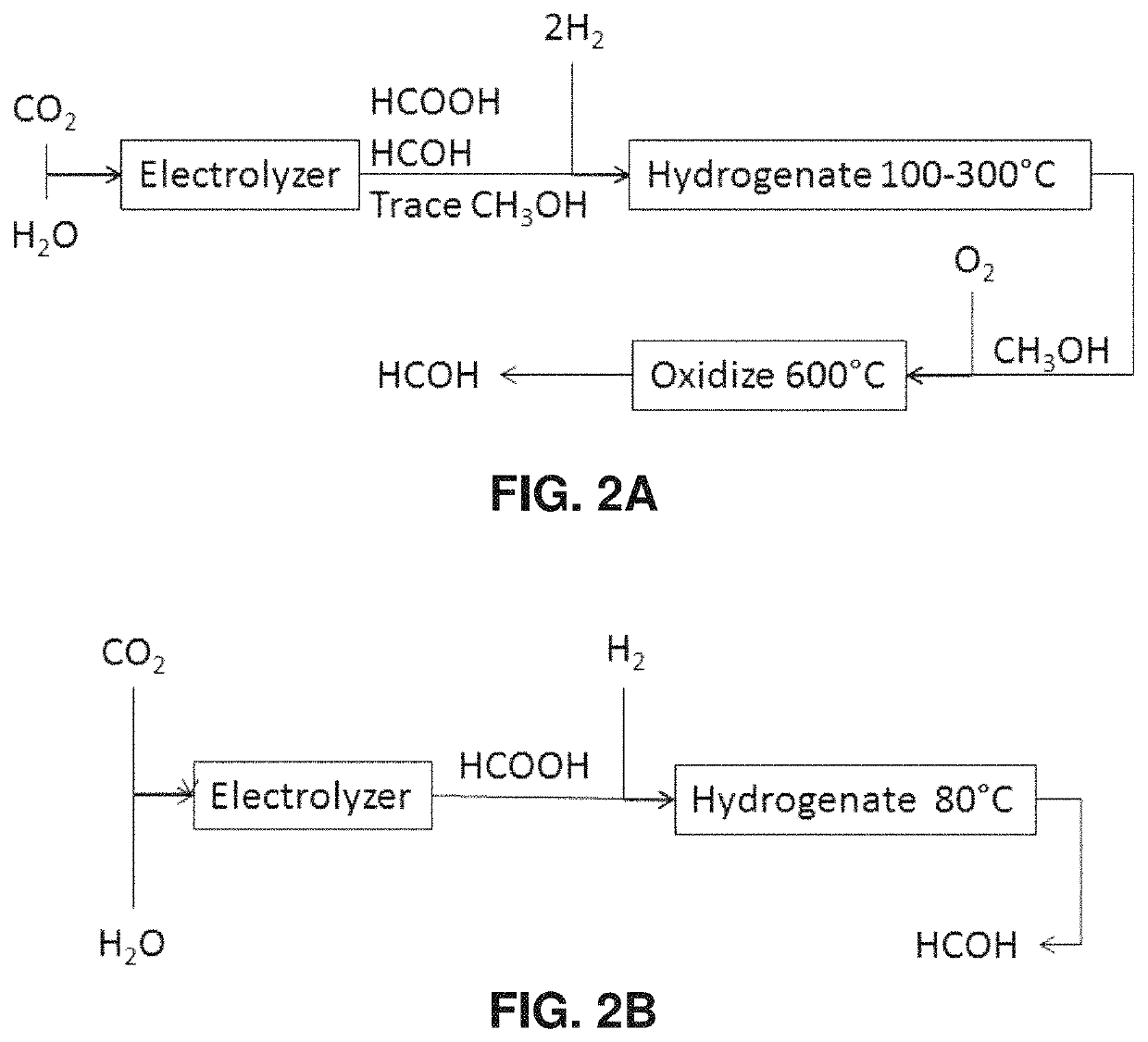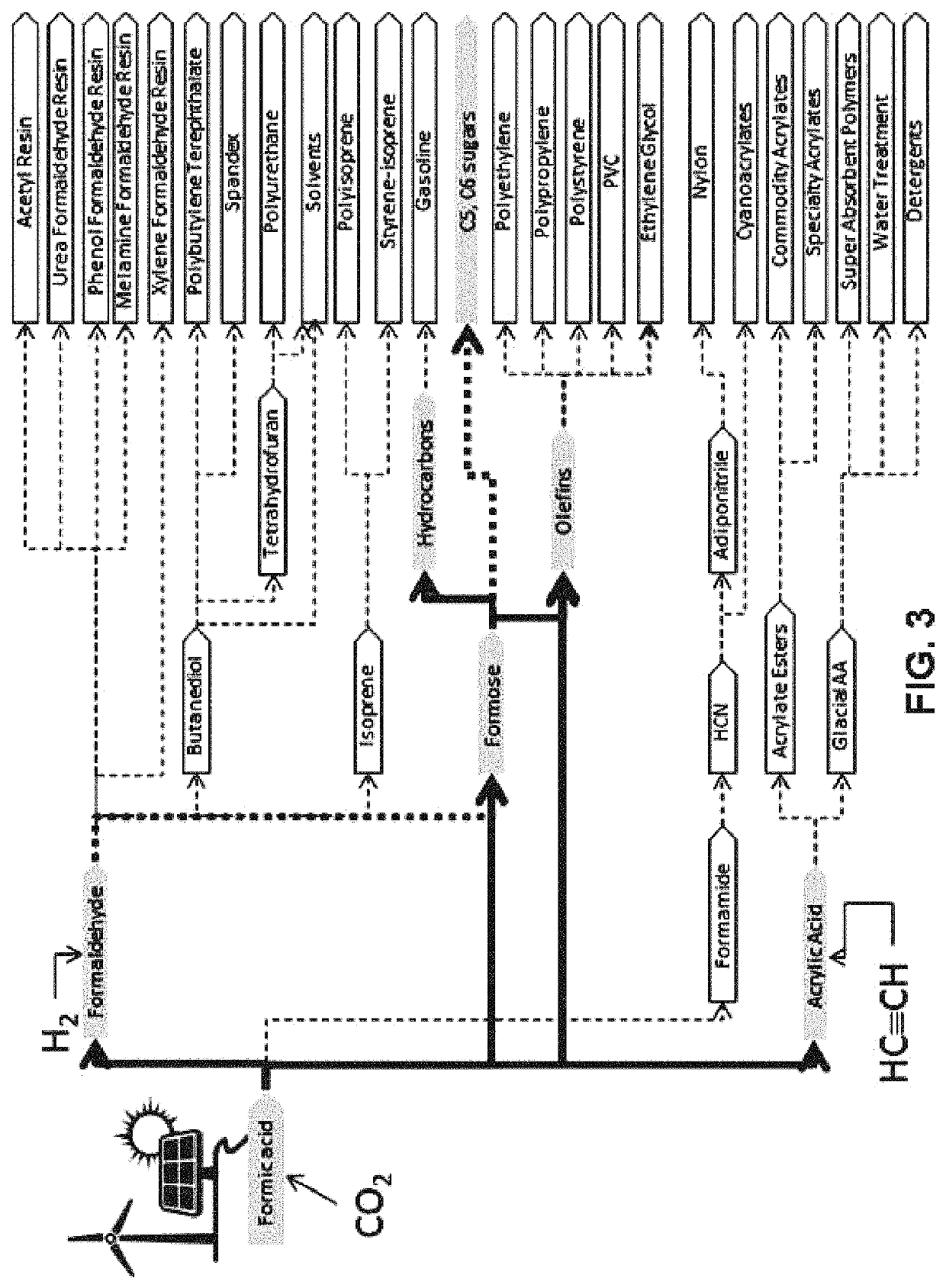Process for the sustainable production of acrylic acid
a production process and acrylic acid technology, applied in the field of catalytic chemistry, can solve the problems of inability to produce acrylic acid in high yield, difficulty in separating metal ions from acid products, and inability to meet the needs of industrial production and other problems, to achieve the effect of reducing the risk of contamination, reducing the safety of workers, and improving the safety of workers
- Summary
- Abstract
- Description
- Claims
- Application Information
AI Technical Summary
Benefits of technology
Problems solved by technology
Method used
Image
Examples
example 1
n of Carbon Dioxide to Formic Acid
[0094]Example 1 illustrates the conversion of carbon dioxide to formic acid, using a modification of the methods in applicant's co-owned U.S. patent application Ser. No. 12 / 830,338. By way of background, electrolysis of CO2 to formic acid had been well known in the literature, but prior to the '338 application those processes exhibited poor energy efficiency. The process described in the '338 application was the first to demonstrate high energy efficiency, but the rate was insufficient.
[0095]The present example provides a method to produce formic acid at a high efficiency and an improved rate. To provide the environmental benefit of effecting a net reduction in the amount of carbon dioxide greenhouse gas in the atmosphere, it is preferred that the CO2 starting material be obtained from sources in which the CO2 would otherwise have been released into the atmosphere, such as combustion, fermentation, or the manufacture of cement or steel. The CO2 coul...
example 2
tion of Formic Acid to Formaldehyde
[0105]The objective of Example 2 is to demonstrate that formic acid can be hydrogenated to formaldehyde using catalysts such as CeO2 and TeO2. By way of background, formaldehyde is currently made industrially via oxidative dehydrogenation of methanol. In 1912, Sabatier and Maihe (Compt. Rend., 152: pages 1212-1215 (1912); “the Sabatier paper”) reported that formic acid reacts on one of two pathways on most metals and metal oxides, namely: a dehydrogenation pathway:
HCOOH→H2+CO2 (1)
or a dehydration pathway:
HCOOH→H2O+CO (2)
Sabatier's paper further indicates that formaldehyde (H2CO) can form at low rates during formic acid decomposition on a thorium oxide (ThO2) catalyst, via the reaction:
2HCOOH→H2O+H2CO+CO2 (3)
[0106]The rates of these reactions are too small to be practical, however. Barteau and coworkers also found transient formaldehyde formation via reaction 3 during TPD of formates in UHV (H. Idriss, V. S. Lusvardi, and M. A. Barteau, Surface S...
example 3
n of Formic Acid to C5-C6 Carbohydrates
[0117]The objective of Example 3 is to demonstrate that carbohydrates can be formed from formic acid. By way of background, the conversion of formaldehyde to mixed carbohydrates via the formose reaction is known. For example, the reaction
nH2CO+H2O→HO(CH2O)nH (5)
is disclosed in U.S. Pat. Nos. 2,224,910, 2,760,983, and 5,703,049, and in Iqbal and Novalin, Current Organic Chemistry 16, page 769 (2012; “the Iqbal paper”). See also Shigemasa et al., Bul. Chem. Soc. Japan 48, page 2099 (1975). It is believed that there is no previous report of carbohydrate synthesis starting with formic acid. The present process provides such a procedure, namely:[0118](1) Converting the formic acid to formaldehyde according to the procedures set forth in Example 2 herein;[0119](2) Reacting the formaldehyde via the methods described in U.S. Pat. Nos. 2,224,910 and 2,760,983 to form a mixture of C3 to C7 carbohydrates.
[0120]In the remainder of this section, an improve...
PUM
| Property | Measurement | Unit |
|---|---|---|
| reaction temperature | aaaaa | aaaaa |
| reaction temperature | aaaaa | aaaaa |
| temperature | aaaaa | aaaaa |
Abstract
Description
Claims
Application Information
 Login to View More
Login to View More - R&D
- Intellectual Property
- Life Sciences
- Materials
- Tech Scout
- Unparalleled Data Quality
- Higher Quality Content
- 60% Fewer Hallucinations
Browse by: Latest US Patents, China's latest patents, Technical Efficacy Thesaurus, Application Domain, Technology Topic, Popular Technical Reports.
© 2025 PatSnap. All rights reserved.Legal|Privacy policy|Modern Slavery Act Transparency Statement|Sitemap|About US| Contact US: help@patsnap.com



